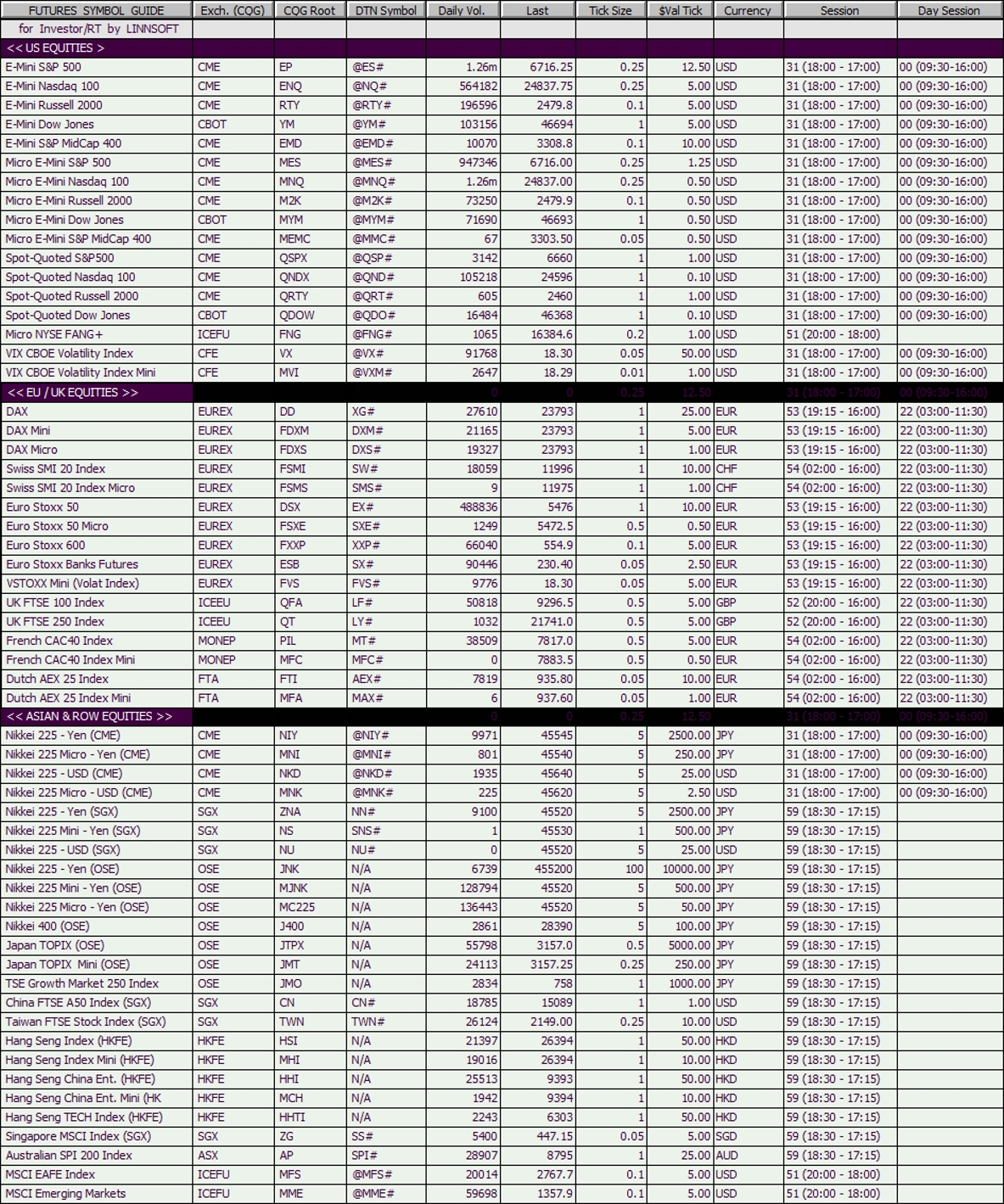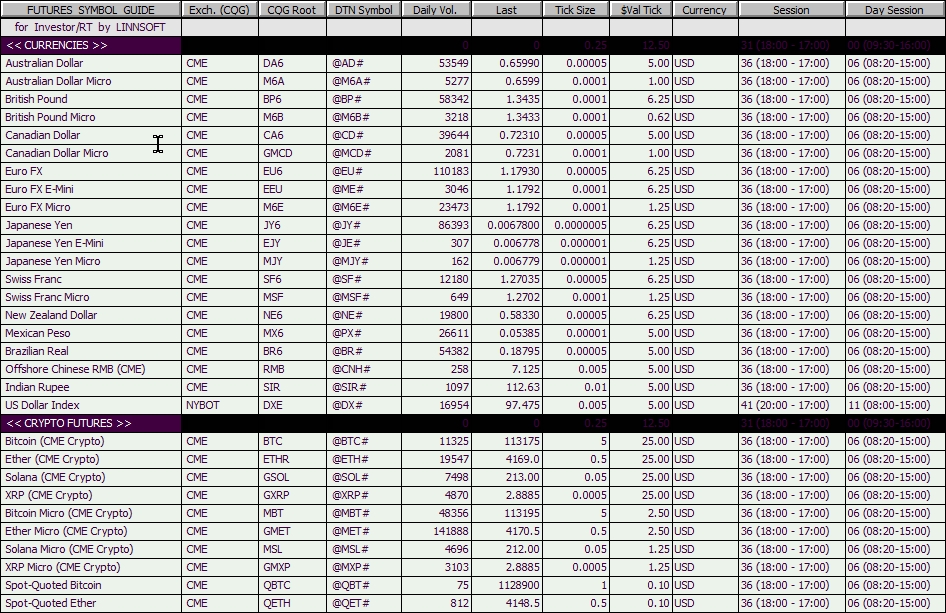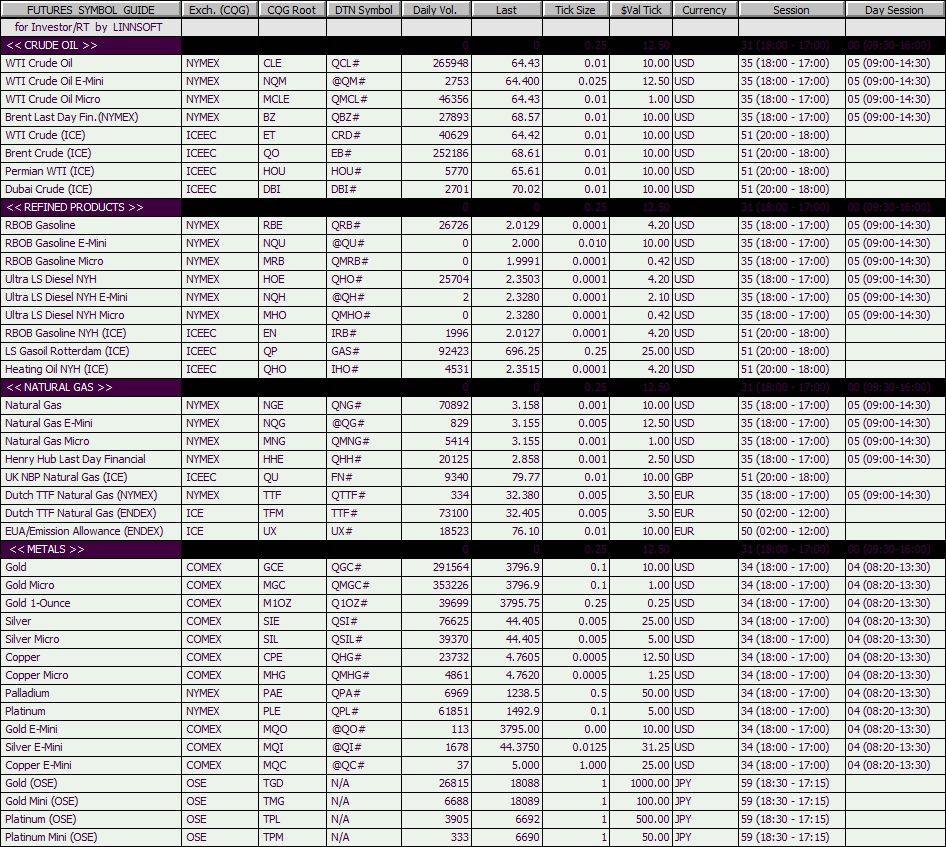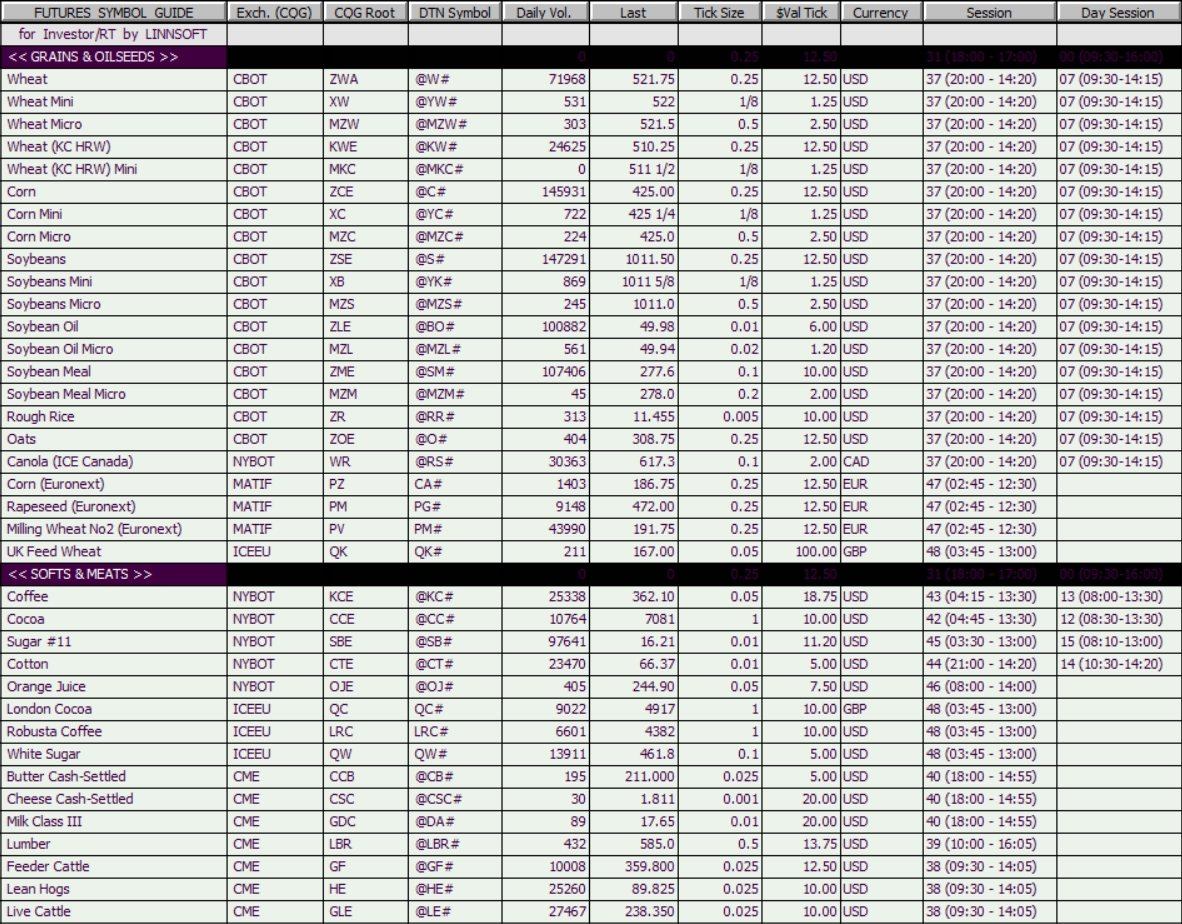The CQG symbol guide will be both practical for
- The Investor/RT subscriber relying on a CQG account as a live data source and therefore using CQG symbols as the primary instruments in their charts and quotepages
- The owner of an IQ feed live data subscription, who will be executing orders towards his CQG account. In this case, the CQG individual contract symbol is added as “Broker Symbol” inside the corresponding DTN instrument settings window
The instrument setup guide summarizes the key Investor/RT instrument concepts that you need to know, such as the DTN downloading alias, I/RT instrument sessions, the importance of the intraday monitoring status, and the historical data retention settings.
Part 1 - CQG Future symbols
For all exchanges, CQG Future symbols are made of a Root symbol followed by 'MYY’ (contract expiration month and year), with YY the last 2 digit of the contract year and M the month code as per the usual alphabetical letter convention for futures:

So EPU5 is the CQG ticker for E-Mini S&P 500 quarterly contract expiring in September 2025. Any front-month contract can also be quickly identified on our Rollover Calendar page.
CQG symbol tables
For an easy read, the following 5 tables, gathering futures symbols per market category, highlight the following information:
- The CQG root symbol, excluding the MYY extension to be added (to obtain a full contract symbol)
- The DTN symbol for the corresponding continuous future contract, used as "Downloading Alias" in the CQG instrument setup window
- Investor/RT default Full and Day sessions (All in Eastern Time), which are further discussed in the Sessions 101 support page
- A typical daily contract volume (as per the end of Sept 2025) was also included so that you could easily spot futures with very low (or even zero !) volume (that have no value to be monitored)
- The instrument tick size (ie, the minimum bid-ask spread), tick value and currency
Note: These 5 tables also include an "Exchange" column for information purposes only. This input is not essential in the case of CQG: based on the symbol ticker, Investor/RT will automatically retrieve from the CQG servers the exchange name information (which has evolved over the years through the multiple exchange M&A deals).
Table 1A - Equity Index Futures (US, Europe, Asia)

Table 1B - Interest Rates and Bonds Futures

Table 1C - Currencies and Crypto Futures

Table 1D - Energy and Metals Futures

Table 1E - Agricultural Futures

Warning / Good practice: Whenever adding for the first time a new symbol to your Investor/RT instance (or during a rollover procedure), always make sure that the full and day sessions are correct before proceeding with a "full download" operation.
Part 2 - CQG Cash Indexes and Market Internals
| Indexes | CQG |
| Dow Jones Industrial Avg | X.US.DJI |
| Dow Jones Transportation Avg | X.US.DOWTTR |
| S&P 500 Stock Index | X.US.SPC5 |
| Nasdaq Composite Index | X.US.NQCOMP |
| Nasdaq 100 Index | X.US.NDX |
| Key Markets Internals | |
| Dow Jones 30 Tick (aka "TIKI") | X.US.DJTICI |
| NYSE TICK | X.US.DJTIC |
| NYSE TRIN | X.US.DJTRN |
| NASDAQ TICK | X.US.NASTIC |
| NASDAQ TRIN | X.US.NASTRN |
| Markets Volume | |
| NYSE Total Volume | X.US.DJTOV |
| NYSE Up Volume | X.US.DJUPV |
| NYSE Dn Volume | X.US.DJDNV |
| NYSE Unch. Volume | X.US.DJUCV |
| Nasdaq Total Volume | X.US.NASTOV |
| Nasdaq Up Volume | X.US.NASUPV |
| Nasdaq Dn Volume | X.US.NASDNV |
| Nasdaq Unch. Volume | X.US.NASUCV |
| Markets Adv/decl. issues | |
| NYSE Advancing Issues | X.US.DJIUP |
| NYSE Declining Issues | X.US.DJIDN |
| NYSE Unch. Issues | X.US.DJIUC |
| Nasdaq Advancing Issues | X.US.NASIUP |
| Nasdaq Declining Issues | X.US.NASIDN |
| Nasdaq Unch. Issues | X.US.NASIUC |
Miscellaneous remarks:
- Always check with your brokerage the list of futures markets (or cash indexes/and data) that are being made available for your account. Paying the market exchange fees for CME or Eurex futures doesn’t necessarily mean that your data provider granted you access to every individual market traded on the CME or Eurex.
- In the case your brokerage firm would offer a futures market not listed above, any CQG futures symbols not present in the I/RT default database can always be added through the Future Type Setup preference menu.
- Please visit the CQG symbol search webpage for any future or indices not listed on these tables.

